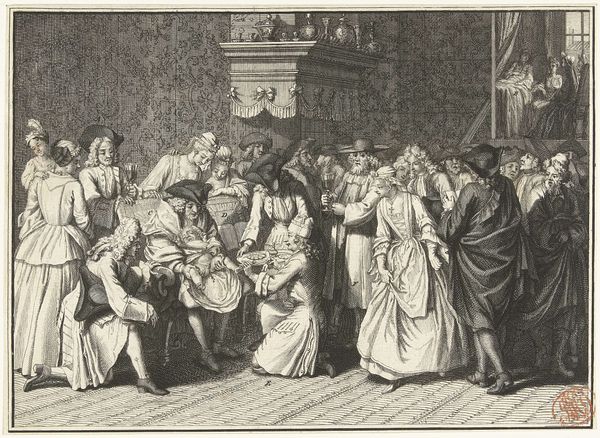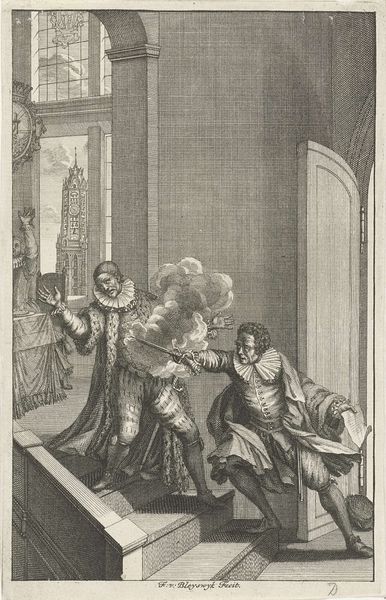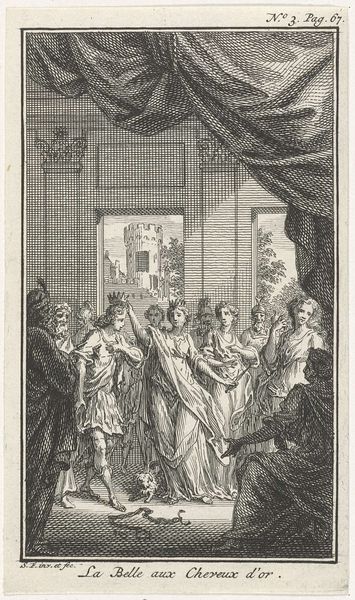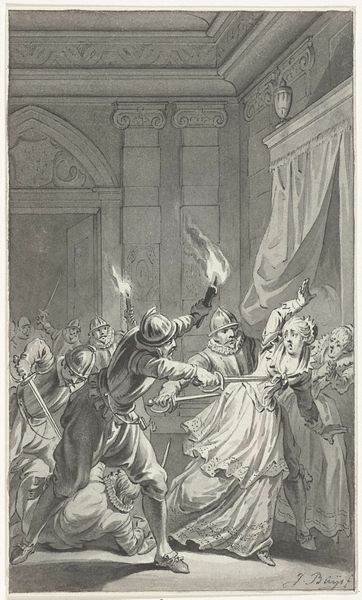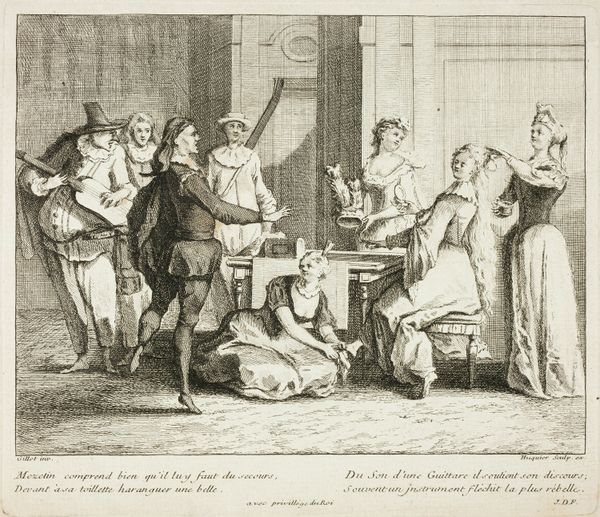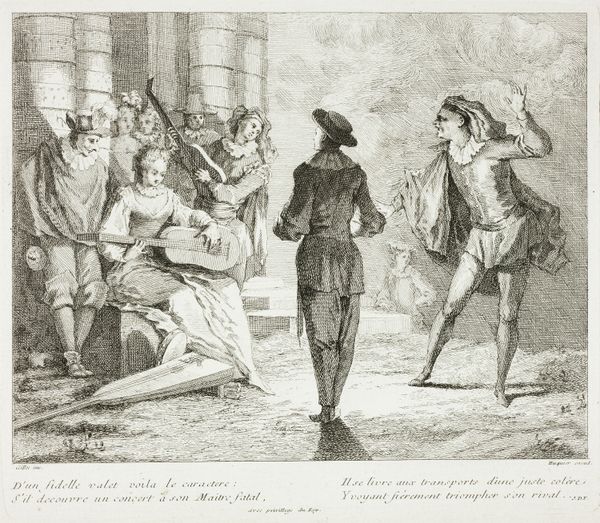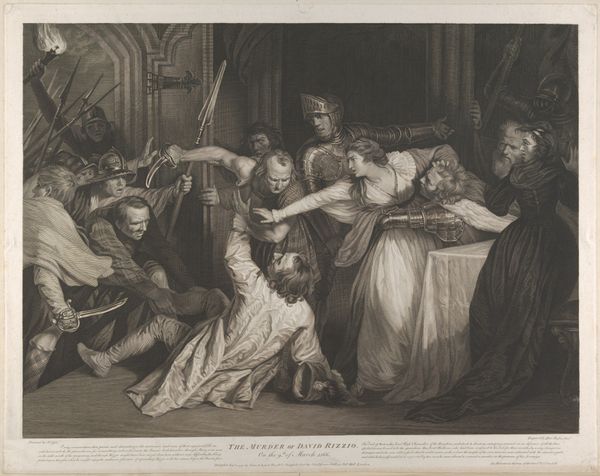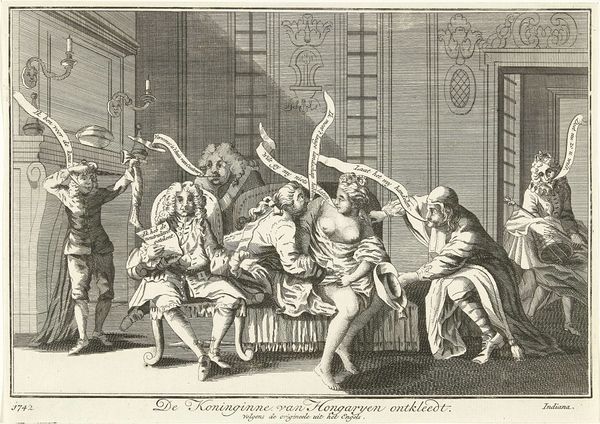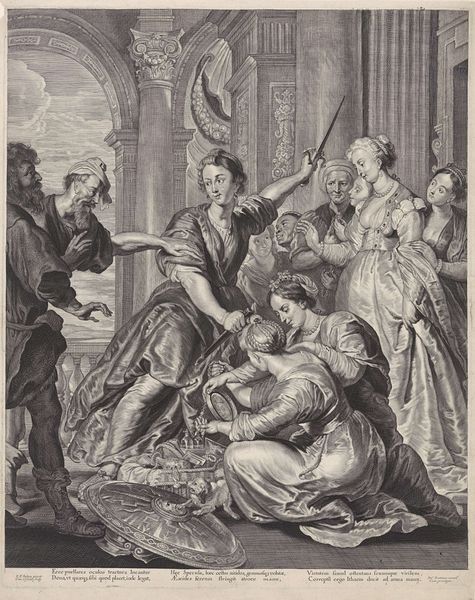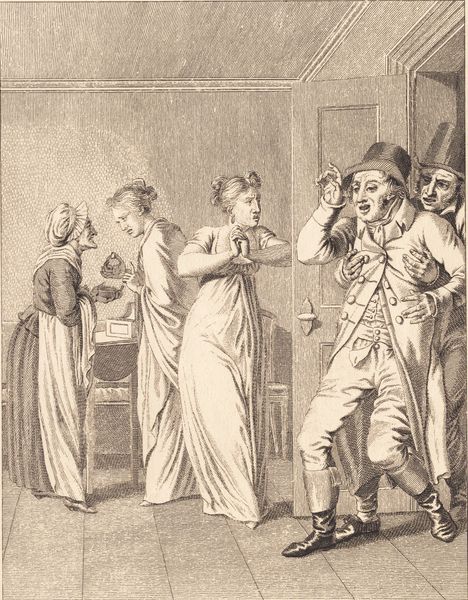
Dimensions: image: 174 x 230 mm
Copyright: CC-BY-NC-ND 4.0 DEED, Photo: Tate
Curator: This is William Blake's "The Temple of Mirth, after Thomas Stothard," and it resides here at Tate Britain. Editor: The first thing I notice is the stark contrast between the figures in the foreground and the busts adorning the walls. There's a disjunction in scale and affect that immediately grabs my attention. Curator: Blake's engraving exists within a complex matrix of 18th-century social commentary. The Temple of Mirth becomes a site where gendered performances, class distinctions, and the very act of spectating are put on display. Editor: Yes, the composition is striking. The central figure, presumably Mirth herself, is positioned above the others, almost like a theatrical director. Semiotically, this spatial arrangement constructs a hierarchy of power and observation. Curator: Blake, deeply influenced by radical thought, uses this scene to critique the societal structures that dictate who gets to experience—or perform—joy. Editor: It's fascinating how Blake uses line and form to both depict and subtly critique the social dynamics of his time. Curator: Absolutely, and by revisiting Stothard's original, Blake infuses it with his own brand of revolutionary inquiry, offering a unique perspective on the era's cultural landscape. Editor: It makes one consider the nature of imitation and subversion, and how Blake's rendition transforms Stothard's vision into something more politically charged.
Comments
tatebritain 8 months ago
⋮
http://www.tate.org.uk/art/artworks/blake-the-temple-of-mirth-after-thomas-stothard-t07048
Join the conversation
Join millions of artists and users on Artera today and experience the ultimate creative platform.
tatebritain 8 months ago
⋮
In this print Blake depicts a personification of Mirth in her temple. Dressed in classical robes, Mirth sits in the centre with worshippers laughing and joking around her. The pictures and busts in the background depict comic characters and writers like Don Quixote and Laurence Sterne. It was made for The Wit’s Magazine, reproducing a design by the illustrator Thomas Stothard. He and Blake had been friends since their student days at the Royal Academy. Stothard helped Blake by recommending him for engraving work. Blake relied on commercial work throughout his life to support his own creative practice. Gallery label, June 2024

